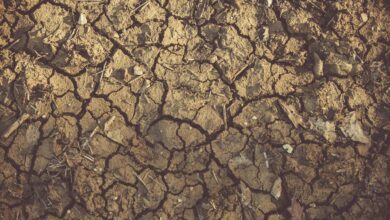Revolutionizing Environmental Restoration: The Power of Bioremediation

Understanding the Need for Environmental Restoration
The modern world has witnessed a surge in environmental degradation, driven by industrialization, urbanization, and unsustainable practices. Soil, water, and air pollution have become widespread, posing significant threats to human health, biodiversity, and the overall well-being of our planet. Traditional remediation methods, such as physical and chemical treatments, have often proven to be costly, energy-intensive, and potentially harmful to the environment. The need for a more holistic and nature-based approach to environmental restoration has become increasingly apparent, making bioremediation a compelling solution.
The Science Behind Bioremediation
At the heart of bioremediation lies the remarkable ability of living organisms to metabolize, transform, or sequester a wide range of environmental contaminants. These organisms, which can include bacteria, fungi, algae, and even plants, possess unique enzymatic capabilities that allow them to break down complex molecules, convert them into less harmful substances, or immobilize them within their own biomass. By harnessing the natural processes of these biological agents, bioremediation leverages the inherent power of nature to clean up and restore contaminated environments.
Types of Bioremediation Techniques
Bioremediation encompasses a diverse array of techniques, each tailored to address specific environmental challenges. Some of the most widely used bioremediation approaches include:
- In Situ Bioremediation: This method involves the direct application of biological agents, such as microorganisms or plants, to the contaminated site, allowing the remediation process to occur within the natural environment.
- Ex Situ Bioremediation: In this approach, the contaminated material is excavated or extracted from the site and then treated in a controlled, off-site facility using bio remediation processes.
- Phytoremediation: This technique utilizes the natural ability of certain plants to absorb, accumulate, or degrade environmental pollutants, making them an effective tool for cleaning up contaminated soil and groundwater.
- Bioventing: This method stimulates the natural biodegradation of contaminants in the subsurface by providing oxygen and other essential nutrients to the indigenous microorganisms.
- Bioaugmentation: This approach involves the introduction of specialized microorganisms or microbial consortia to the contaminated site, enhancing the natural biodegradation processes.
Also read: The Impact of Oil Spills: Examining the Environmental Consequences and Solutions
Case Studies Showcasing Successful Bioremediation Projects
Bio-remediation has been successfully implemented in a variety of real-world scenarios, demonstrating its versatility and effectiveness. One notable example is the cleanup of the Exxon Valdez oil spill in Alaska, where the application of bio-remediation techniques, including the use of nutrient-enriched fertilizers, significantly accelerated the natural degradation of the oil, leading to the restoration of the affected ecosystem. Another case study involves the remediation of heavy metal-contaminated soils in India, where the strategic deployment of metal-accumulating plants, such as sunflowers and mustard, has proven to be a cost-effective and environmentally friendly solution.
Advantages and Limitations of Bioremediation

Bioremediation offers several distinct advantages over traditional remediation methods. It is generally considered a more sustainable and eco-friendly approach, as it relies on natural processes and minimizes the use of harsh chemicals or energy-intensive technologies. Additionally, bioremediation can often be more cost-effective, as it may require less infrastructure and maintenance compared to other remediation techniques. However, bioremediation also has its limitations, such as the potential for slow treatment times, the need for site-specific optimization, and the potential for incomplete or ineffective treatment in certain cases.
Implementing Bioremediation in Different Environments
Bioremediation can be applied in a wide range of environmental settings, from contaminated soil and groundwater to marine ecosystems and industrial waste streams. The specific bioremediation approach employed must be tailored to the unique characteristics of the contaminated site, including the nature and concentration of the pollutants, the local climate and geography, and the availability of suitable biological agents. In some cases, a combination of bioremediation techniques may be necessary to achieve the desired level of environmental restoration.
Also read: The Dirty Truth You Need to Know About Fossil Fuels
Bioremediation Regulations and Policies
As the adoption of bioremediation technologies continues to grow, regulatory bodies around the world have developed guidelines and policies to ensure the safe and effective implementation of these methods. These regulations often address issues such as the selection and use of biological agents, the monitoring and evaluation of bioremediation projects, and the disposal or management of the treated materials. Compliance with these regulations is crucial to ensure the long-term sustainability and environmental integrity of bioremediation efforts.
Future Prospects of Bio-remediation
The future of bioremediation holds immense promise, as ongoing research and technological advancements continue to expand the capabilities of this innovative approach. Emerging fields, such as synthetic biology and genome engineering, are poised to unlock new frontiers in bioremediation, allowing for the development of even more efficient and targeted biological agents. Additionally, the integration of bioremediation with other environmental technologies, such as renewable energy and sustainable waste management, could lead to the creation of comprehensive, nature-based solutions for environmental restoration and protection.
Conclusion: The Potential of Bio-remediation in Revolutionizing Environmental Restoration
As the world grapples with the pressing challenges of environmental degradation, bio-remediation stands as a testament to the power of nature-based solutions. By harnessing the inherent capabilities of living organisms, this revolutionary approach has the potential to transform the way we address and restore damaged ecosystems. From cleaning up oil spills to remediating heavy metal-contaminated soils, bioremediation has proven its versatility and effectiveness, offering a sustainable and eco-friendly path forward. As we continue to explore the frontiers of this technology, the future of environmental restoration holds the promise of a greener, healthier, and more resilient planet.
Also read: Understanding the Difference: Bioaccumulation vs Biomagnification




